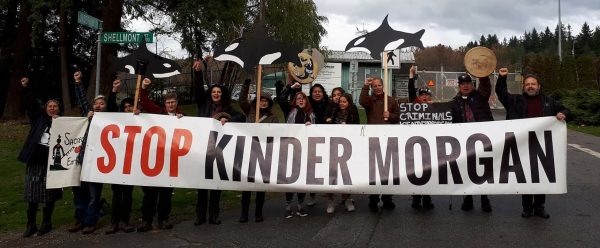Canadian oil producers scramble as pipelines, railroads hit capacity

Canadian oil producers saw their inventories stranded after a leak on the Keystone pipeline in South Dakota forced the closure of the line early last month. The pipeline was reopened in late November. TransCanada Twitter photo.
Canadian oil producers struggle to get crude to market
Canadian oil producers are in a bind as they scramble to get their crude to market. Pipelines and rail lines are almost at full capacity while prices have been driven to four-year lows.
Companies are now concerned that they will have to sell their oil at a deep discount until at least late 2019, even though international crude prices have strengthened.
“We have a build-up of supply and that’s only going to get worse next year. We are adding more and more pressure into a constrained export system,” Wood Mackenzie analyst Mark Oberstoetter told Reuters.
 Despite the challenges of getting product to market, Canadian oil sands output is continuing to rise as construction projects are completed and smaller expansions of existing operations are brought online.
Despite the challenges of getting product to market, Canadian oil sands output is continuing to rise as construction projects are completed and smaller expansions of existing operations are brought online.
As production rises, so does the amount of Canadian crude in storage, which hit record levels in western Canada after a leak on the Alberta to US Keystone pipeline shut down the line last month.
Now, Canadian heavy crude is trading close to its widest discount to US WTI since December 2013, mostly due to the increased inventories.
The discount on Canadian heavy crude hit as much as $28/barrel below the WTI benchmark and the outright price of Canadian oil was less than $30.
According to Reuters, many traders and analysts forecast that the discount will be wider in 2018 than the year-to-date average of $12/barrel as oil supply rises.
In 2018, oil sands output is expected to rise by 315,000 barrels per day (b/d) and 180,000 b/d in 2019 to 3.2 million b/d, according to RBC Capital Markets. The firm also predicts that exports will materially exceed pipeline capacity in early 2018.
RBC forecasts the WCS discount will be $15.50 in 2018 and $17.50 in 2019. Reuters reports Shorcan Energy brokers are calling for a $20.45 discount to WTI.
Coupled with pipeline headaches, oil companies looking to get their crude to market via rail are dealing with railroad companies who see rising demand for their services as short-term and are therefore reluctant to invest in expanding capacity.
At an investors conference in November, Canadian Pacific Railroad chief executive Keith Creel said the company went through a “very painful divorce” with crude-by-rail during a previous drop in oil prices.
He said he would not be making 30-year investment decisions based on demand that may only last two to three years.
In the past, railroad companies lost money after expanding their capacity for the oil industry only to see demand fall when oil prices collapse or new pipelines open up.

Canadian oil producers face opposition from protestors as well as regulatory delays. Burnaby Mountain Updates Facebook photo.
Regulatory delays and environmental opposition have slowed or halted the construction of Canadian pipelines that would carry crude to tide water and markets outside the United States.
No new export pipelines will be built before late 2019 at the earliest when Enbridge’s Line 3 replacement project is expected to be completed.
“Canadian producers are now at the mercy of rail given that current pipes are near capacity and production continues to grow as legacy oil sands projects ramp up,” Michael Tran, director of energy strategy at RBC Capital Markets told Reuters.
“This pricing underscores how fragile the Canadian energy industry is due to lack of pipeline takeaway capacity.”
Suncor and Imperial Oil do own their own refineries, which helps the large oil companies offset low crude prices with higher refining margins. A number of smaller oil companies have taken out financial hedges to limit their exposure to widening WCS differentials.
Cenovus Energy leases its own rail cars and owns the 77,000 b/d Bruderheim rail terminal located near Edmonton, ensuring the company has a number of options available to ship crude.
“Having our own crude-by-rail loading facility also decreases the risk of having to compete for potentially expensive capacity during periods of pipeline constraint,” spokesman Reg Curren told Reuters.
Two industry sources told Reuters that the CPR is looking for shippers to lock into minimum one-year commitments to carry crude. They added rail companies are reluctant or entirely uninterested in monthly, spot deliveries.
But, traders and producers are wary of signing such contracts which are significantly more costly than pipelines. By rail, crude is shipped to the US Gulf Coast for between $10-$12/barrel while pipeline costs amount to about $8.
Canadian National Railway Co told crude shippers that it will not offer any more rail capacity for oil until Q2 of 2018, according to three Reuters’ sources.








